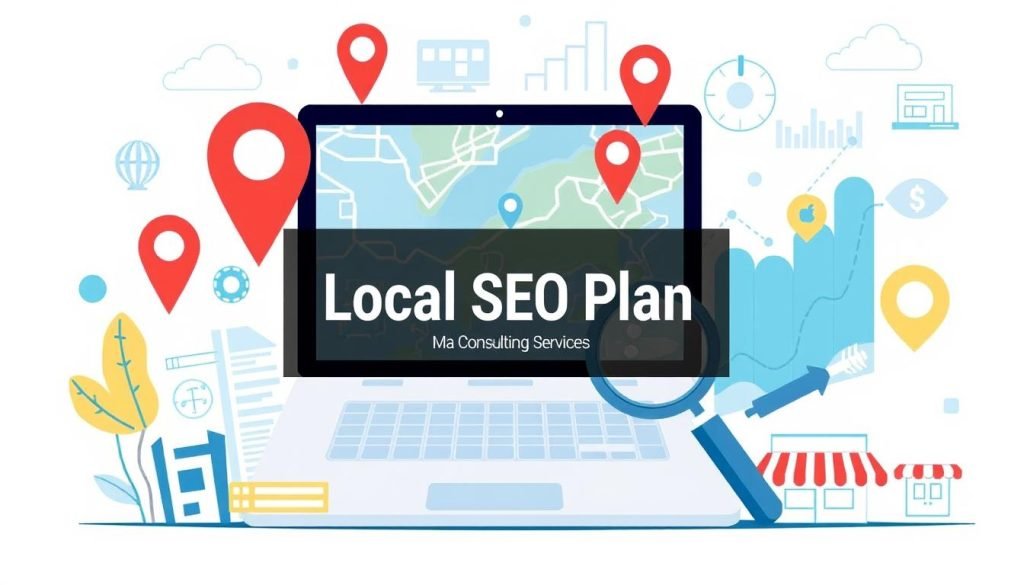In today’s world, 88% of people trust online reviews as much as friends’ advice. This shows how important customer feelings are for local SEO. As a business with many locations, you have to track rankings and compare with competitors in different places. But, using sentiment analysis SEO can help you understand what customers say and improve your online presence.
Sentiment analysis, or emotion AI, looks at text to see what people feel in online reviews. By understanding what customers feel in Google Business Profile reviews, you can find ways to get better, make customers happier, and rank higher in local searches. Ma Consulting Services says managing your Google reviews well is key to better local SEO.
The role of sentiment in local SEO is huge. Bad reviews can make 22% fewer people want to visit if you don’t fix it fast. But, asking happy customers for reviews can make your ratings go up and get more reviews. Also, talking back to reviews can make customers more engaged by up to 30% and could even make you 10% more money. Watching reviews and seeing trends helps you fix problems early, keeping your good name and high rankings.
Key Takeaways
- Customer reviews greatly affect local SEO, with 88% of people trusting them as much as friends’ advice.
- Sentiment analysis of reviews gives insights into what customers think, helping businesses spot what’s good and what’s not at each place.
- Good management of Google reviews is key to better local search rankings.
- Replying to reviews can make customers more engaged by up to 30% and could increase sales by 10% or more.
- Keeping an eye on reviews helps spot trends and fix problems early, protecting your reputation and rankings.
Understanding Sentiment Analysis in SEO
Sentiment analysis looks at the feelings behind online content and reviews. It’s not a direct ranking factor but affects user behavior. Positive sentiment means more engagement and better search visibility.

A study shows 57.6% of top search results have only positive content. Only 0.26% of top pages have neutral sentiment. This shows how important a positive online image is. For local businesses, analyzing online reviews is key to understanding local popularity.
What is Sentiment Analysis?
Sentiment analysis uses tools to find the emotional tone of online content. It looks at:
- Customer reviews
- Social media posts
- Support tickets
- Forum discussions
By analyzing sentiment, businesses learn what customers think. This helps improve products and services.
Importance of Sentiment in Local SEO
For local businesses, online reviews are crucial. A study found that products with five reviews are 270% more likely to be purchased. Reviews are more important for expensive products.
Monitoring sentiment helps manage online reputation. Tools like BrightLocal’s Reputation Manager and Hootsuite Insights track sentiment. This lets businesses quickly address negative feedback and keep a positive image.
How Search Engines Interpret Sentiment
Search engines like Google judge website quality by expertise, authoritativeness, and trustworthiness (E-E-A-T). Positive sentiment helps a website seem trustworthy and authoritative.
Google hasn’t confirmed using sentiment analysis in its algorithms. But, Bing has since 2023. Google is likely to follow soon.
Using tools like Social Mention, Sentiment Analyzer, and the 100-Point Algorithm helps track sentiment. This data guides local SEO strategies. Improving sentiment leads to better online presence and more customers.
Implementing Sentiment Analysis for Your Business
To use sentiment analysis well, you need a clear plan. This means picking the right tools, gathering and analyzing customer feedback, and using positive feedback to boost your SEO.
Tools for Analyzing Customer Sentiment
Tools like Local Falcon or Lexalytics can sort text as positive, negative, or neutral. They help you see what customers think. A study shows 79% of people trust online reviews as much as friends’ opinions.
Steps to Collect and Analyze Reviews
To do sentiment analysis right, get feedback from different places. This includes:
- Online reviews
- Social media platforms
- Surveys
With these tools, you can quickly find out what people feel. This shows you what customers like and dislike.
| Insight | Statistic |
|---|---|
| Customer complaints related to service issues | 70% |
| Brands failing to respond to negative reviews | 50% |
| Potential customer loss due to unaddressed negative reviews | 25% |
Leveraging Positive Sentiment for SEO Benefits
Highlighting your strengths and changing based on feedback can help you stand out. This can improve your SEO by up to 30%. Also, managing your online image can keep more customers.
Approximately 72% of customers will take action only after reading a positive review, emphasizing the need for businesses to analyze sentiment effectively.
Working with Ma Consulting Services can help you use AI for better SEO and a strong online image.
Enhancing Your Local SEO Strategy with Sentiment Insights
To make the most of sentiment analysis in local SEO, you need to use these insights in your content strategy. Knowing how customers feel about your brand helps you create content that speaks to them. This not only keeps users engaged but also boosts your local search rankings. Ma Consulting Services highlights the role of sentiment analysis SEO in building strong connections with your audience.
Responding to Reviews: Best Practices
It’s key to respond to all reviews, both good and bad, to manage your online reputation and SEO. By showing you care about customer feedback, you can get more positive reviews. Studies show that products with great reviews are 270% more likely to sell than those without.
When you reply to reviews, be professional and understanding. Try to fix any problems quickly. This shows you value your customers’ opinions.
Continuous Monitoring and Improvement of Local SEO
To stay competitive in local search, keep an eye on sentiment and adjust your strategies as needed. Watching brand sentiment in real-time lets you act fast during crises. This helps protect your SEO and reputation.
Tools like Yext, Chatmeter, and BrightLocal help manage your brand’s public image. They analyze emotions across different platforms and boost visibility based on feedback. Using sentiment data, you can make smart choices and stay ahead of customer trends.
FAQ
What is sentiment analysis and how does it relate to local SEO?
Sentiment analysis looks at text, like online reviews, to see what people think and feel. In local SEO, it helps businesses understand what customers say about them. This can help improve customer happiness and make your business more visible online.
How does sentiment influence SEO performance?
Sentiment doesn’t directly affect SEO rankings. But, it can change how people interact with your site. Positive feelings can make people more likely to stay and explore, which is good for SEO. For local businesses, knowing what people think is key to being seen as popular and relevant.
What are some tools for analyzing customer sentiment?
Tools like Local Falcon or Lexalytics can help you understand what people feel about your business. They look at reviews, social media, and surveys to find out if opinions are good, bad, or neutral. This helps you know what to improve on.
How can businesses leverage positive sentiment for SEO benefits?
Using positive feedback to your advantage can help you stand out and improve your SEO. By listening to what customers like and making changes, you can attract more positive attention. Also, responding to all reviews shows you care about your customers.
What are some best practices for responding to reviews?
When someone leaves a negative review, apologize quickly and offer to fix the problem. This helps protect your reputation and SEO. For positive reviews, say thank you and highlight what they liked. Always keep an eye on what people are saying and adjust your plans to meet their needs.
How can sentiment insights inform content strategy?
Using sentiment analysis in your content marketing can make your campaigns more effective. It helps you create content that speaks to your audience’s feelings and needs. This way, you can improve your local search rankings and connect with your audience on a deeper level.













